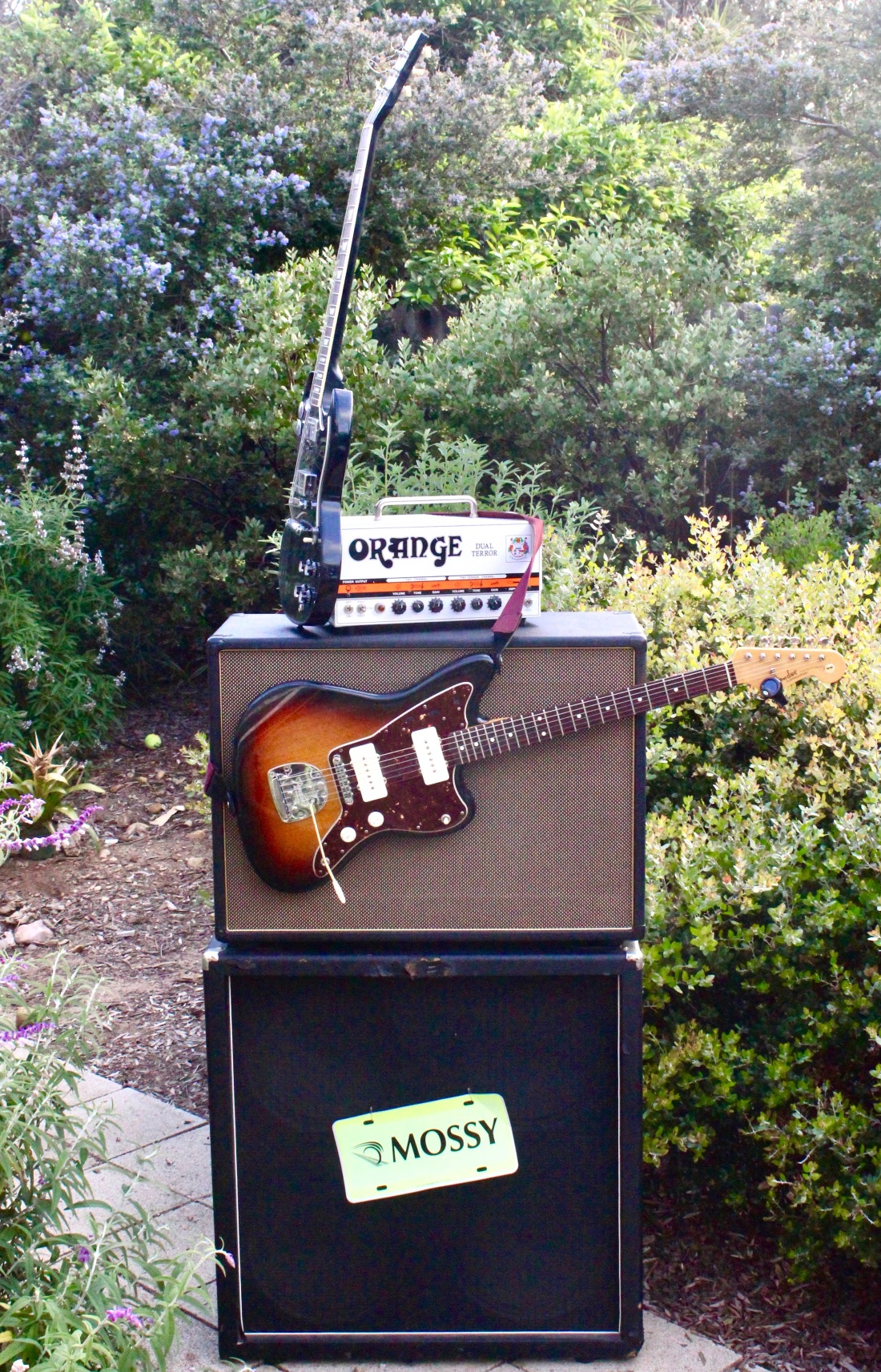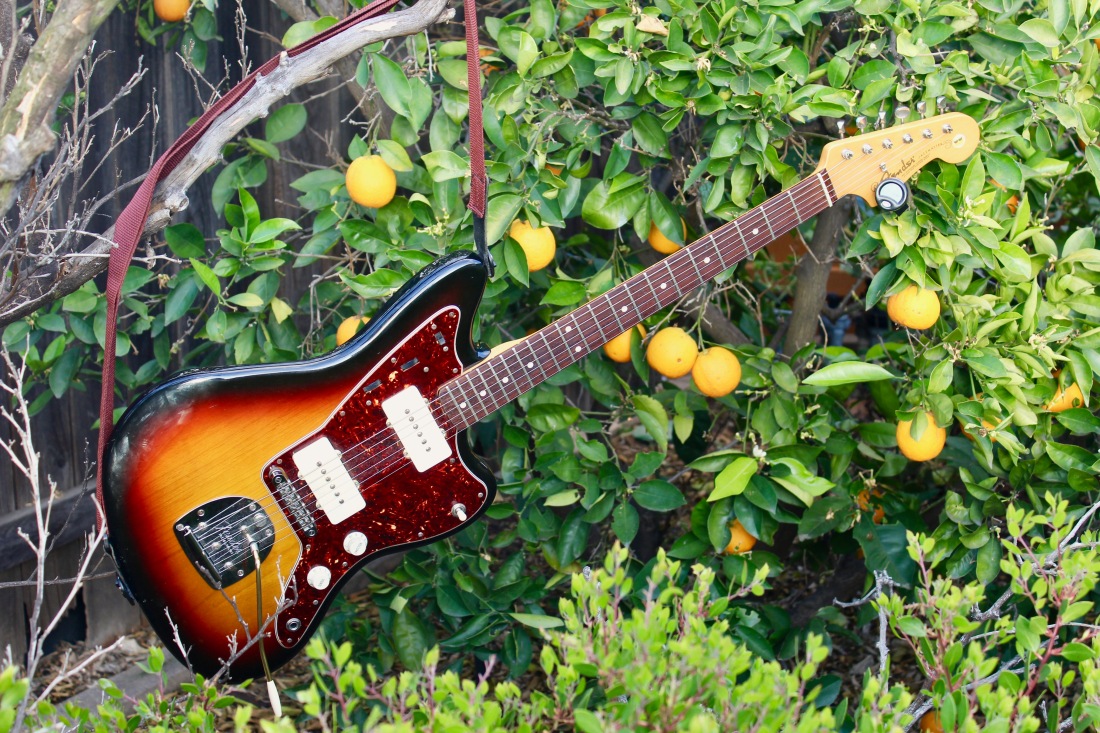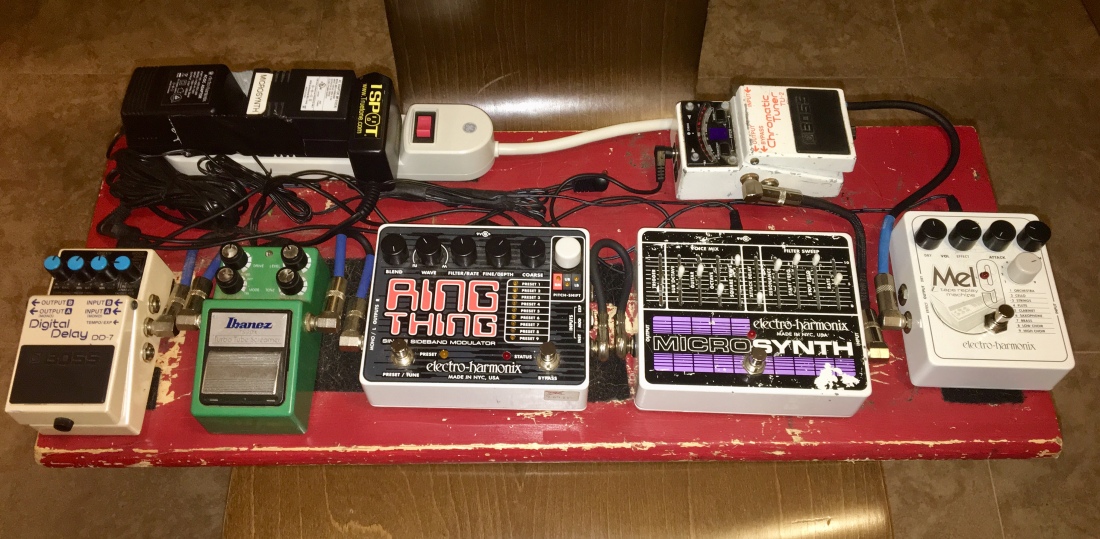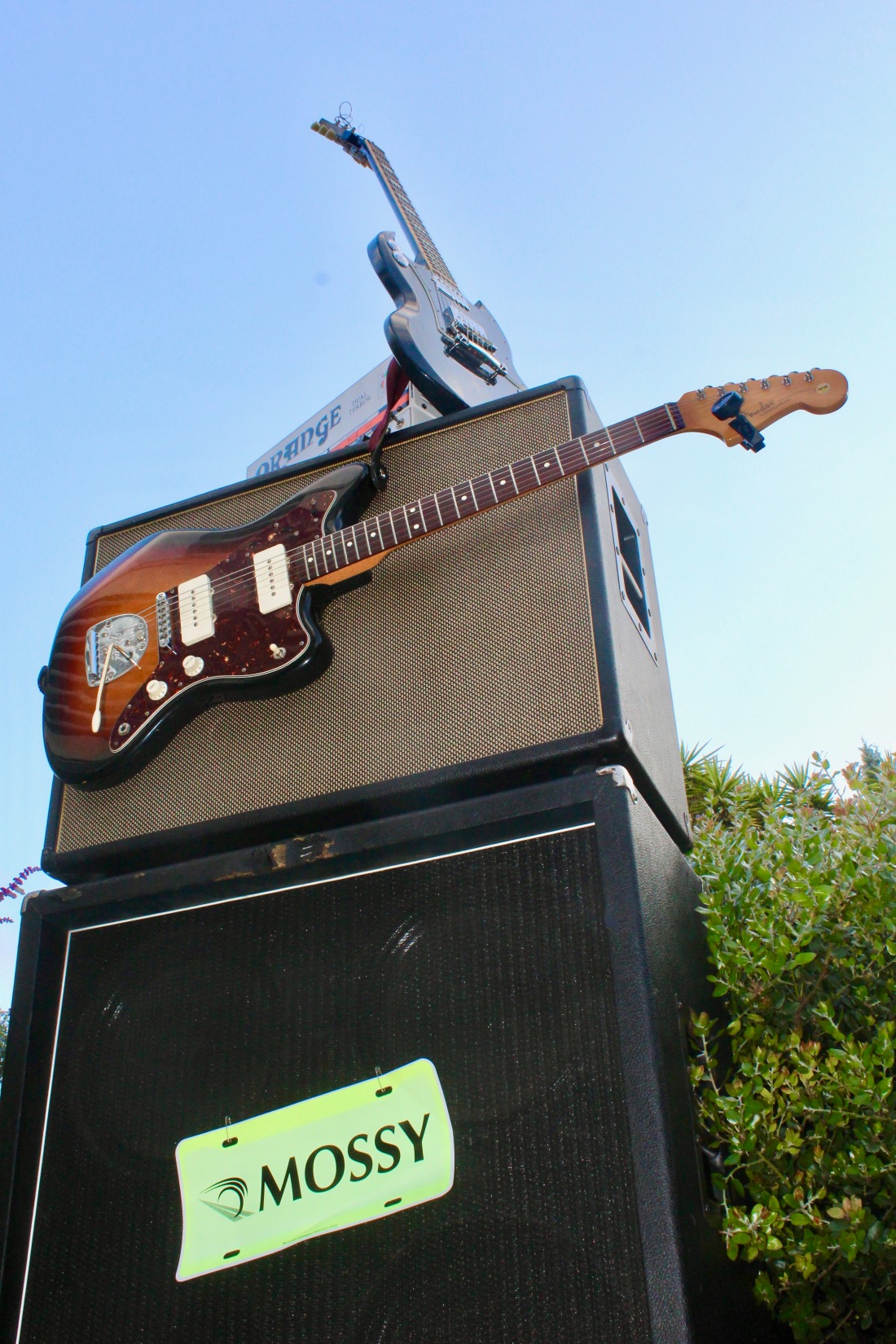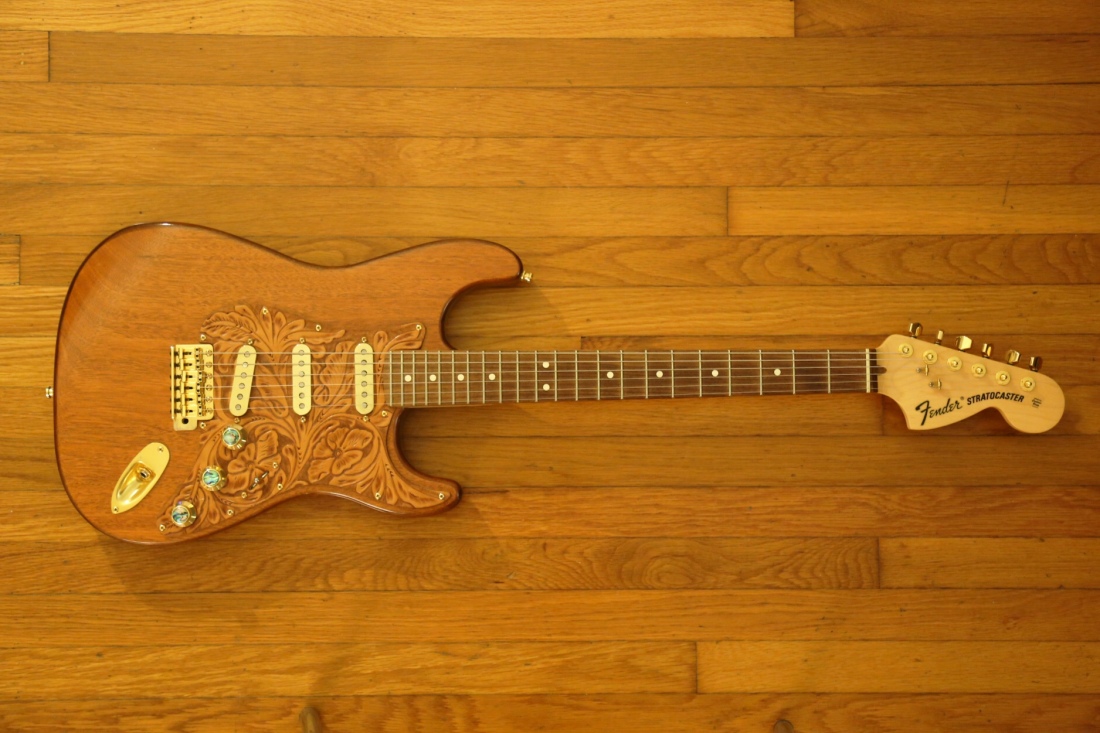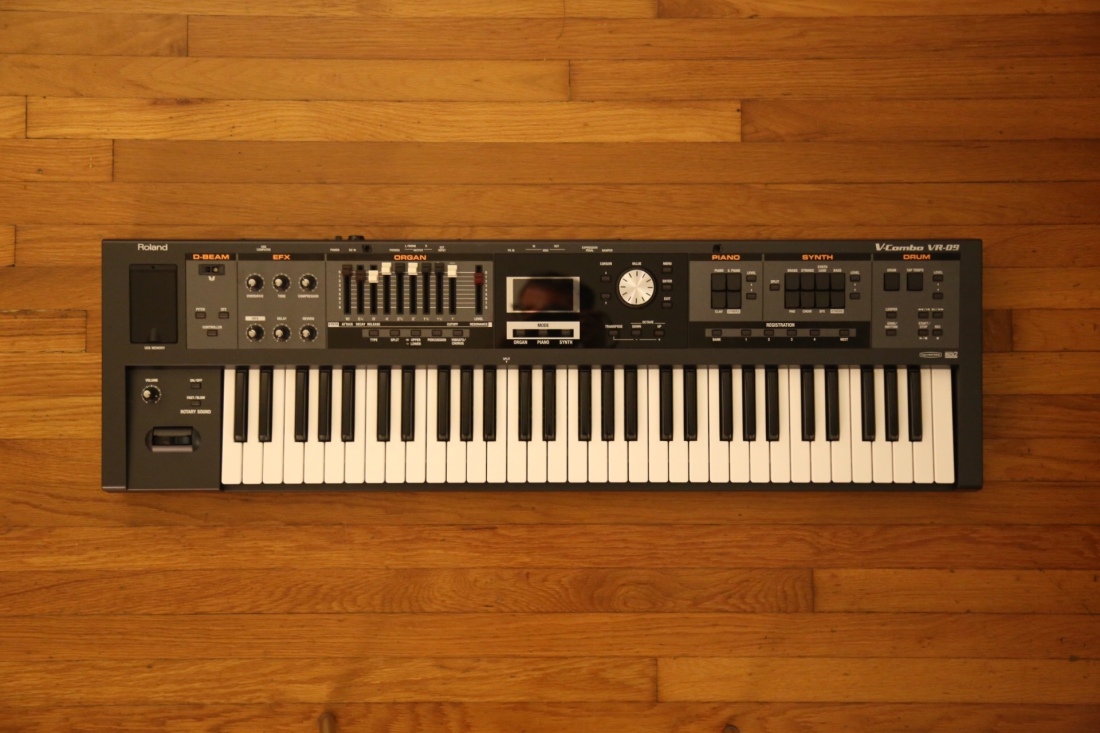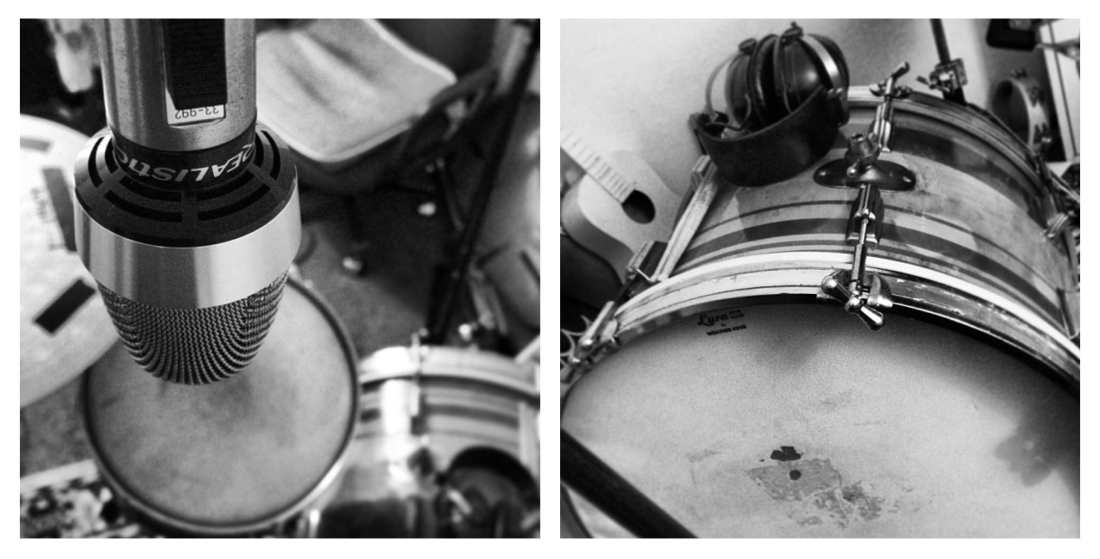Gear & Loathing is proud to present the brand-new Yaga-Shura track “The Sky Is Blue” for your listening pleasure. Be sure to buy it via Bandcamp if you can.
Francis Roberts: Bandcamp / King Gorm / Old Man Wizard / Yaga-Shura / Instagram / Twitter
1. In your last Gear & Loathing feature, we mostly focused on your Old Man Wizard gear but you’ve got more (and different) irons in the fire right now. Tell me about your new projects and what you’re working on. What’s inspiring you these days, musically?
Funny you mention that. I’m actually listening through my second mix of a new Old Man Wizard album while I answer these questions. As far as new stuff goes, I’m doing a lot of more cinematic music, mostly with synthesizers. I recently scored a couple of short films that will hopefully be out soon, and I’m releasing a lot of dark ambient/dungeon synth type stuff over at my Bandcamp page.
Aside from that, I have an album coming out for my sorta throwback Rainbow/Uriah Heep worship-type of project King Gorm at the end of July. Behind all of that I have a fairly experimental synth-pop/electronic project called Yaga-Shura that I’m periodically releasing stuff for. That’s the only project I’ve got right now where I’ll listen to stuff I made and think to myself, “How did I make that sound?” or “How did I make time to make that sound?” Lots of fine detail work and sequencing of hardware.

2. In your last Gear & Loathing feature, you showed us your silver High Spirit Strat. It’s been awhile since then: why/how has it remained your #1 after all this time? Is there a challenger perhaps?
No challenger really. On the new Old Man Wizard album, we did some takes with my other guitars but in the final edits I only ended up using takes where I played the High Spirit one. I play better on it and it sounds better. Same deal with the upcoming King Gorm album and the Yaga-Shura tracks that have guitar in them. I play a lot of guitars that feel like toys, even when they play and sound great. The guitars Connor from High Spirit builds feel more like high quality tools. I actually almost bought a second one so I could have a backup at gigs in case I changed a string, but I can’t really afford to (because of reasons that will become obvious in the next question).

3. I’m gonna need all the details on this synth rig. When/how/why did you get the Mellotron M4000D and the Model D? What are you uses for both? Favorite settings or sounds?
I’ve owned a ton of synths at this point and none of them ever sounded good enough. I probably spent the better part of a year trying to find a synth that could sound like a Model D without costing as much as a Model D, and, well, there aren’t any. I sold all of them within a year of buying them. Not even a Moog Voyager will do it (but those do come really close and are better at other things). I’ve tried the Behringer clones and they’ll sound pretty close if you have twice as much time to dial them in, but if you put them side by side with a Moog, they give you the feeling that you’re going to push them off the table before you get them to sound right. I also can’t get them to shine through a mix the same way. Maybe some other people can. If you’re reading this and you can, please buy me food with the money you saved! Anyway, the Model D ends up on almost every recording I make these days, and the sounds I’ve gotten from it have gotten me hired to do session work and film scores, and it’s actually well on its way to paying for itself, somehow.
The Mellotron is another story. I’ve known I needed a Mellotron for years, and went through a ton of Mellotron plugins and samples. They were great (and still are), and then I found out that this Swedish guy named Markus Resch bought the company and the original tapes and stuff and does a great job maintaining (and honoring) the legacy of the brand. [Check out his website here] He also makes digital sampling synths that use the Mellotron layout and samples the original sounds in a way that is pure magic. I emailed him and asked if he’d sell me one and he was super nice and told me about all the different models he has. I ended up getting his Micro version, loving it (it’s on a ton of my solo stuff, the first Yaga-Shura EP, and the King Gorm album). Then I found out that Markus’s M4000D model has the same type of keybed as an actual Mellotron, which has a sort of bizarre version of polyphonic aftertouch. It’s one of the most expressive instruments I’ve ever played, an absolute masterpiece. I decided to sell my Micro and shop around for an M4000D. I found a used one online and noticed the guy selling it was from San Diego. Small world. Anyway, I ended up giving him my Micro as part of the sale of his M4000D, and I think it made both of us feel a lot better about the transaction. You probably know him: Pall Jenkins from Three Mile Pilot and Black Heart Procession!
My go-to sounds on each instrument depends on the project. A Mellotron is basically an orchestra in a box, so you really have to think like an arranger when you use it. Obviously the famous sounds are the strings and flutes, but I find myself using the tubular bells, woodwinds, vibraphone, and celeste sounds quite a bit. I use the Moog for bass, leads, and sound effects. I usually create a sound specifically for each track I make. It feels a lot like you’re mixing as you go.
4. Have you ever wanted to get a more expansive (perhaps digital) synth that could combine both of those worlds? Or is there really nothing out that could accomplish that?
Well, the Mellotron technically is a digital sampling synth. If Markus wanted to make Mellotron sounds for me out of my favorite Moog patches, I’d probably use that for something, but I’m not rich or famous enough to bug him to do that. [laughs] I also regularly daydream about adding a Black Corporation Deckard’s Dream to my setup, since it’s one of the only great synths out there that could take advantage of the Mellotron keybed’s ability to send polyphonic aftertouch.

(A young Hans Zimmer standing next to his Moog Modular system)
5. If you were to upgrade, or move on from either the Mellotron or the Moog, what do you think you would get?
I’ve seriously considered buying a Synthesizers.com modular system, but every time I think about it, I realize that I would still want the Moog. If cost weren’t an issue, I’d get a Hans Zimmer-style wall of Moog Modular. I also really like the Moog One.
And this probably sounds crazy, but if I had a ton of money, I’d get two or three more Mellotrons. The little ones stack nicely on the big ones, and the tape ones work well as keyboard stands and are capable of a few fun things the digital ones can’t do.
6. Does it worry you to haul around and set these up for shows? I’d be riddled with anxiety. Why not use emulations live via a laptop or MIDI?
I have really great cases for everything, and the whole rig can essentially be one trip from the car. As far as theft, well, that happens sometimes. If it happens, it happens, and worrying about it will only make me unhappy and less likely to play well. I just sorta go for it. And as far as the laptop thing goes, nothing against laptops, I’ve heard people get great sound from them, but, well, I haven’t been able to. I’m sure I could spend some time figuring it out, but my stuff always works and always sounds right, and none of it can run out of batteries. I also think it looks pretty cool and intimidating up on stage!
7. I know you’ve been pretty focused on your synth-based music lately, why do you think that is? Is it more challenging to write/create than in a typical band format, or easier?
I really haven’t been more focused on it; I’ve just been recording it. I guess enough people told me that it sounded nice when I was “just messing around,” so I started hitting the record button before I messed around, and then I started putting it up on Bandcamp. People haven’t stopped being nice to me about it so I’ll keep sharing it. It’s also way easier than writing for a band, because I can stop whenever I want or add as much as I want without having to wonder whether or not it’ll work live. I think I have something like five hours of synth music up on Bandcamp now, so I think people will understand if I leave out a song or two. [laughs]
8. I see that Strymon Deco hiding next to the Moog. What are you using it for and what does it add to your overall sound?
I just got that, so it’s not on any recordings yet. It’s completely incredible. I bought it because the demos reminded me of the J37 plugin from Waves, which I use on almost everything lately. The Deco did not disappoint me, and I’m hoping to add some of the fake tape magic to my live shows soon (probably really soon, I’m hoping to do another livestream set maybe next month). Finding out that there’s a pedal that does a decent job at the tape saturation and tape speed tricks thing was a dream come true, and Strymon did a great job with it.

9. I’ve never seen the Correct Sound Eclipse pedal, or the SoloDallas Storm: gimme a rundown on what each of them do and how you’re using them?
I use the Correct Sound as a preamp for bass, mostly, but I used it on guitar for the two Yaga-Shura tracks that have electric guitar. It’s supposed to make your amp sound like a Sunn Concert Lead, which is one of my favorite solid state amps. I borrowed one (the Sunn) from my friend Lewis a few years ago for the bass guitar parts in “Blame It All On Sorcery,” and then at some point I saw the Correct Sound on Reverb. It doesn’t sound exactly like the Sunn but I love it and I really love what it does to DI bass.

SoloDallas is known for creating their Schaffer replica, which is a gain stage circuit used famously by like, everyone important in the late ’70s to the present. The Storm is sort of their entry-level version of it, and it sounds great (only slightly worse than the real deal, for something like a 10th of the cost). I found out about them when my friend started working for them. They’re based in San Diego! Anyway, people are starting to catch on to the fact that somebody is actually making a clone of this important piece of gear nerd history. If you don’t believe me, take a look at their artist roster. It’s kinda intimidating.
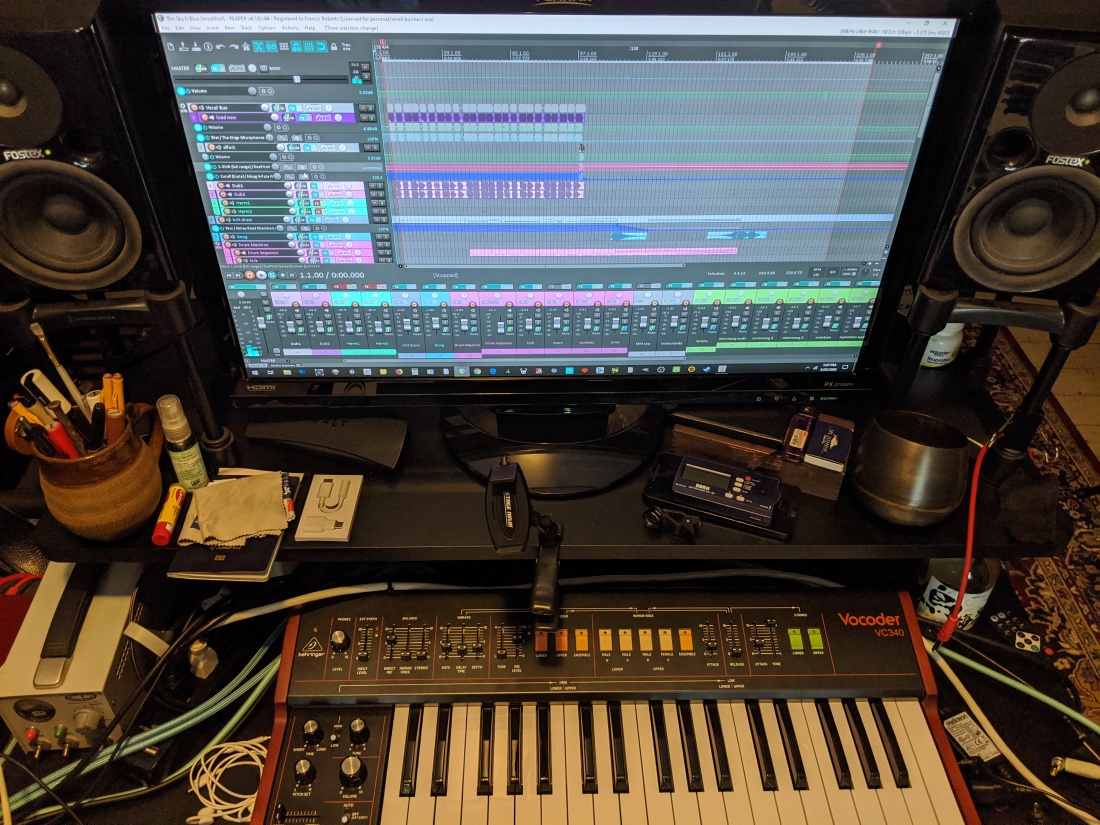
10. I’ve never used Reaper and don’t know much about it. How does it stand up to other DAWs? Do you find it to be limited at all? Do you mix with Reaper, or have your music mixed and mastered elsewhere by someone else?
I switched from Pro Tools to Reaper because I hate paying for software updates and subscriptions. Every time I find myself wishing it would do something that Pro Tools did, I find out that it actually does. There are very few things it can’t do, and it’s become my favorite DAW by far. I’ve never felt limited by it. I mix with Reaper, I try to avoid mastering because I’m not great at it (but when I have to, I also do it in Reaper). I track in Reaper, I even do a lot of simple video editing with it. It’s incredibly easy to customize it to fit your workflow, and it plays nice with all the hardware I use. I even know some people who use it live in their laptop rigs.
11. Give me your review of the Behringer VC340! Haven’t heard much about those and I’m already intrigued by a vocoder synth that actually works well. You finding it useful?
Don’t buy it unless you know exactly what it does. I cannot stress this enough: It does nothing else. It’s really good at being a vocoder/string machine but it literally does nothing else. Anyway, I love it. I don’t use it a ton, but I was getting sick of trying to get the sound I wanted with software, and I’m not about to pay $5,000 for a Moog Vocoder (as much as I really really want to be able to afford to do that). I’m using it pretty sparsely on the new Old Man Wizard album, and it’s on one of the Yaga-Shura tracks so far. I’m planning to do a few Yaga-Shura tracks with a Daft Punk-style lead vocal, so that’ll probably be the first time you hear it front and center in any of my tracks. [Listen to it featured on the track below]
12. What’s the lunchbox preamp-lookin’ thing on your desk next to the Behringer? Compressor? Preamp?
Oh that’s the preamp for my Chameleon Labs TS-2 microphone. It’s a really incredible large diaphragm condenser for the price. I usually just use it for lead vocals but sometimes I’ll mic a bass cab or an acoustic guitar with it.
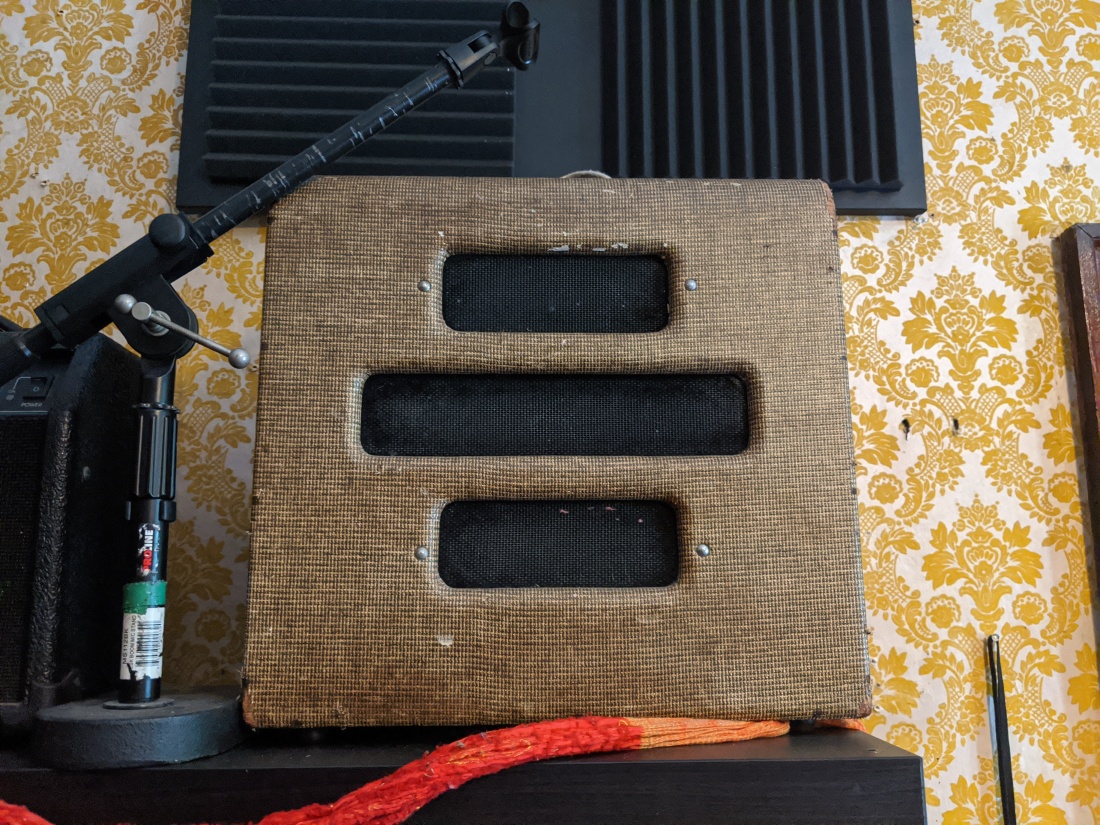
13. That Valco amp is somethin’ else. I’ve seen you perform with different amps before though. Didn’t you use an old Marshall at some point? What has drawn you to the Valco?
I still have that Marshall (it’s a copy of a JTM45, so not Marshall brand but all new old stock parts and really high build quality) but I’ve never recorded with it. It’s really just too loud for anything but shows. The Valco is my recording amp because it does “loud” amp sounds at a much lower volume. I used to borrow my friend’s Supro for that sound but this one is even quieter so it’s easier to record with. All those old ’60s amps sound great when my friends Connor and Chris tell me what tubes to put in them.
14. If you could buy any piece of gear right now (money was no issue), what would you get and why?
Probably a Moog IIIP with a few of the sequencer compliments, a couple of Space Echos or Echorecs, a good Rhodes electric piano, and I’d also probably replace my entire recording setup with a no-computer setup. I think I’d still mix digitally on a computer, but I tend to get better results tracking when I don’t have that “that’s an easy edit in a DAW” bug whispering in my ear.

15. I don’t see many gongs on Gear & Loathing, might be the first actually. Is a gong the secret ingredient to your music?
This also belongs to my friend Connor. It goes on a lot of my stuff. You can’t really put it anywhere, but it’s one of those things that can’t be replaced by anything. If you need a gong, you’ve gotta use a gong.

